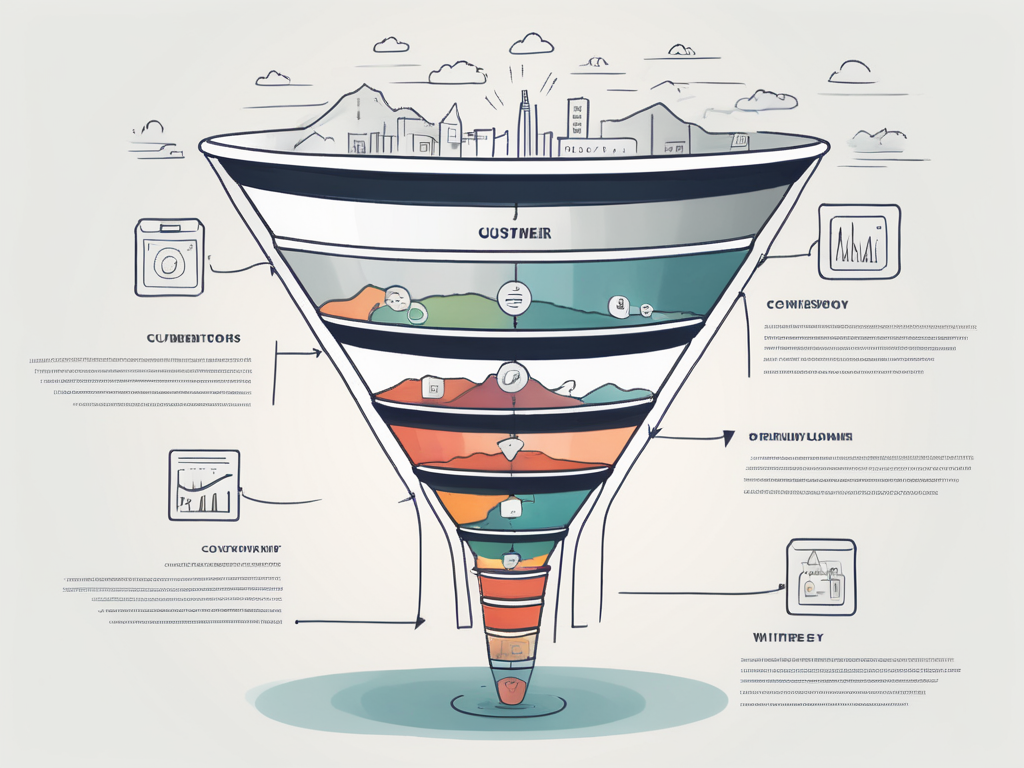
Discover the key factors that determine a good conversion rate and learn how to optimize your website to achieve higher conversion rates.
What is Good Conversion Rate?
Conversion rate is a vital metric that measures the percentage of website visitors who take a specific desired action, such as making a purchase or filling out a lead form. It is a key indicator of how well your website is performing in terms of capturing and engaging visitors.
Factors that Influence Conversion Rates
Several factors can influence your conversion rate. One crucial factor is the overall user experience (UX) of your website. Factors such as website design, navigation, and page load speed can greatly impact how users interact and engage with your site.
When it comes to website design, it's essential to consider not only aesthetics but also functionality. A clean and intuitive layout can guide users seamlessly through your site, making it easier for them to find what they're looking for. Additionally, incorporating responsive design ensures that your website looks great and functions well on all devices, from desktops to smartphones.
Another important factor is your website's content. Compelling and persuasive content that clearly communicates the value and benefits of your products or services can significantly improve your conversion rate.
Creating high-quality content involves understanding your target audience and addressing their pain points and needs. By providing valuable information and solutions, you can establish your brand as an authority in your industry and build trust with potential customers.
Furthermore, trust and credibility play a significant role. Testimonials, reviews, and trust symbols can enhance the trustworthiness of your website and increase the likelihood of conversions.
Customer testimonials and reviews offer social proof, reassuring visitors that others have had positive experiences with your products or services. Displaying trust symbols such as security badges and industry certifications can also help alleviate any concerns about the safety and reliability of making a purchase on your site.
Understanding the Importance of Conversion Rates
Conversion rates are crucial because they directly impact your website's effectiveness in driving business goals. A high conversion rate indicates that your website is successfully convincing visitors to take the desired action and can generate more leads or sales.
By tracking and analyzing conversion rates, you can identify areas of improvement and make data-driven decisions to optimize your website. This will help you enhance the user experience, refine your marketing strategies, and maximize your website's potential for success.
Furthermore, understanding conversion rates can provide valuable insights into consumer behavior and preferences. By delving into the data behind conversion rates, you can uncover patterns that reveal what resonates with your target audience and what may be hindering their decision-making process. This knowledge can be leveraged to tailor your website content and design to better meet the needs and expectations of your visitors.
Moreover, a deep understanding of conversion rates can also lead to more effective A/B testing and experimentation. By experimenting with different elements on your website and analyzing how they impact conversion rates, you can refine your approach and continually improve your website's performance. This iterative process of testing and optimization is key to staying competitive in the ever-evolving digital landscape.
Benchmarks for Different Industries
Conversion rate benchmarks vary across industries. It's essential to compare your conversion rate with others in your specific industry to gain a better understanding of your website's performance.
For example, in the e-commerce industry, the average conversion rate ranges from 2% to 4%. However, industries such as finance and software may have significantly lower conversion rates due to the complexity and decision-making process involved.
On the other hand, industries like travel and hospitality often experience higher conversion rates, typically ranging from 5% to 8%. This can be attributed to the emotional nature of travel bookings and the sense of urgency that drives customers to make quick decisions.
Additionally, the healthcare industry tends to have conversion rates on the lower end of the spectrum, around 1% to 3%, as patients may take more time researching and consulting before committing to a service or treatment plan.
Strategies to Improve Your Conversion Rate
There are several strategies you can implement to improve your conversion rate. One effective approach is to optimize your website's landing pages. Tailor the content and design to align with the visitors' expectations and make the desired action clear and compelling.
Personalization can also enhance conversion rates. By leveraging user data and segmentation, you can deliver targeted messages and offers that resonate with your audience and increase the likelihood of conversions.
Additionally, employing persuasive call-to-actions (CTAs) and reducing friction in the conversion process, such as simplifying form fields or offering guest checkout options, can significantly boost your conversion rates.
Expanding on the concept of optimizing landing pages, it's crucial to conduct A/B testing to determine which elements resonate best with your target audience. By testing different variations of headlines, images, and CTA buttons, you can gather valuable data on what drives conversions and refine your approach accordingly. Furthermore, incorporating social proof elements such as customer testimonials, reviews, and trust badges can instill confidence in visitors and encourage them to take the desired action.When it comes to personalization, consider implementing dynamic content that changes based on user behavior or demographics. This tailored approach can create a more engaging experience for visitors, increasing the likelihood of conversion. Moreover, analyzing user journey data through tools like heatmaps and session recordings can provide insights into where visitors may be dropping off in the conversion funnel, allowing you to make informed optimizations.In addition to persuasive CTAs, it's essential to ensure a seamless user experience throughout the conversion process. This includes optimizing website speed, ensuring mobile responsiveness, and providing multiple payment options to cater to diverse preferences. By prioritizing user experience and continuously refining your conversion strategies, you can cultivate a high-converting website that drives business growth.Analyzing Conversion Rate Data
Regularly analyzing your conversion rate data can provide valuable insights into user behavior and preferences. Identify trends, patterns, and areas of improvement based on key metrics such as traffic sources, device types, or specific landing pages.
Consider utilizing web analytics tools like Google Analytics to gather data and generate reports. This data will guide your optimization efforts and help you make informed decisions to increase your conversion rate.
Common Mistakes that Affect Conversion Rates
Several common mistakes can negatively impact conversion rates. One common mistake is having a complicated checkout process. Long and confusing checkout forms can discourage users from completing their purchase, leading to higher abandonment rates.

Poor website performance, such as slow loading times, can also be detrimental to conversion rates. Users expect websites to load quickly and will likely leave if they encounter excessive delays.
In addition, irrelevant or overwhelming website content can overwhelm users and distract them from taking the desired action. Ensure your content is concise, relevant, and guides users through the conversion process.
The Role of User Experience in Conversion Rates
User experience plays a vital role in influencing conversion rates. A well-designed website with intuitive navigation, clear information hierarchy, and visually appealing elements can captivate users and encourage them to explore further.
Moreover, responsive design that ensures optimal viewing experiences across various devices can contribute to higher conversion rates. With the increasing prevalence of mobile usage, it is crucial to provide a seamless experience across different screen sizes.
By continuously testing and optimizing your website's UX, you can create a user-friendly environment that maximizes conversions and fosters long-term customer loyalty.
Tools to Track and Optimize Conversion Rates
There are several tools available to track and optimize conversion rates. Google Analytics is a popular choice that provides a range of insightful metrics and data visualization options to monitor your website's performance.
A/B testing tools, such as Optimizely or VWO, enable you to test different variations of your website or landing pages and evaluate their impact on conversion rates.
Heatmap tools, like Crazy Egg, can help you identify where users are clicking, scrolling, or getting stuck on your website. This information allows you to make informed changes to optimize your conversion funnel.
Case Studies of Successful Conversion Rate Optimization
Examining case studies of successful conversion rate optimization can provide valuable insights and inspiration for your own website. Learn from successful businesses that have implemented effective strategies and achieved significant improvements in their conversion rates.
Case studies can showcase best practices and highlight specific tactics and tools that have proven successful. Analyze these success stories and adapt their strategies to suit your business and target audience.
Future Trends in Conversion Rate Optimization
As technology continues to evolve, so does the field of conversion rate optimization. Stay informed about the latest trends and innovations that can impact your website's conversion rates.
For instance, Artificial Intelligence (AI) and machine learning are increasingly used to personalize user experiences and optimize conversion rates. Chatbots and virtual assistants can provide instant assistance and streamline the conversion process.
Additionally, voice search and mobile optimization are becoming critical considerations for improving conversion rates. Ensure your website is optimized for voice search queries and offers a smooth experience on mobile devices.
In Conclusion
Understanding and optimizing your conversion rate is crucial for the success of your online business. By considering the factors that influence conversion rates, leveraging effective strategies, and analyzing data, you can continually enhance your website's performance and drive greater conversions.
Stay informed about industry benchmarks, innovative tools, and emerging trends to stay ahead in the ever-changing landscape of conversion rate optimization.





